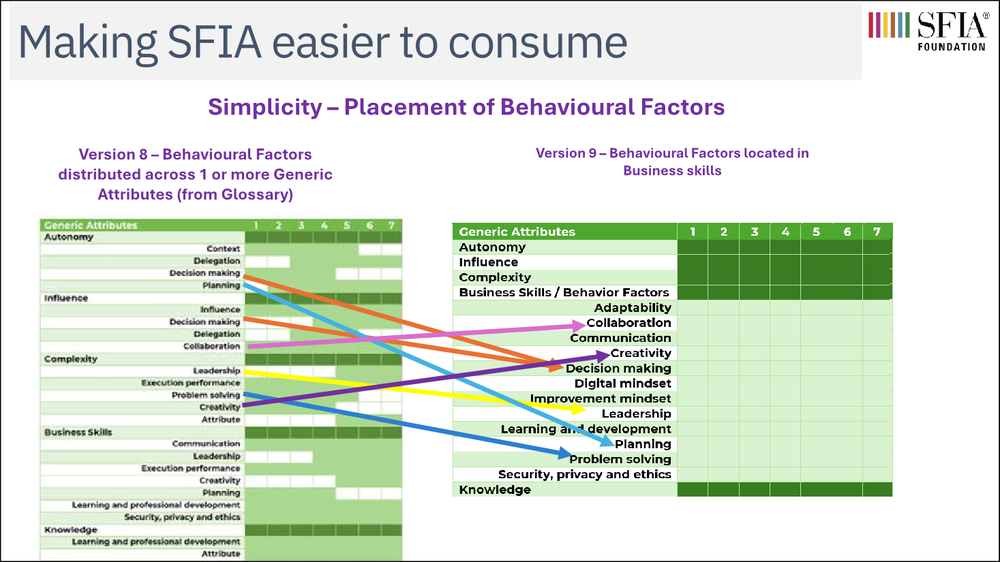Convert glossary of behavioural factors to web pages
Purpose: Make it easier to see the value of and use SFIA's business skills/behavioural factors
Note: The behavioural factors have always been present in SFIA. In SFIA 9 they have been made more visible. In previous versions they have been part of the generic attributes and business skills descriptions.
The glossary of Behavioural factors were introduced in SFIA 8.
- Complementing SFIA’s professional skills framework, the glossary highlighted the behavioural factors within the 7 levels of responsibility across the 5 key attributes of Autonomy, Influence, Complexity, Business skills and Knowledge.
- This was an early step in making the contents of the generic attributes easier to consume
Converting the Behavioural Factors into navigable web pages is a further step in making the framework more user-friendly, accessible, and adaptable to the needs of its global user base.
- Improved accessibility: Web pages are more easily accessible across various devices and platforms compared to PDFs, which may require specific software to open
- Enhanced user experience: Navigable web pages allow users to quickly find and access specific information through menus, search functions, and hyperlinks
- Link to SFIA's 7 levels: Easier to see how the seven levels interact with the behavioural factors
- Enhanced searchability: Content on web pages is more easily indexed by search engines, making it easier for users to find specific information about SFIA Behavioural Factors through both internal site searches and external search engines
You can view the pages here - Generic attributes, business skills and behavioural factors

This graphic shows how the behavioural factors from SFIA 8 have been distributed to the Business skills/behavioural factors in SFIA 9.
Click to enlarge
Alternative presentation of behavioural factors
SFIA offers two presentations of the behavioural factors - with category headings and without - to accommodate different user needs and preferences.
The web pages for SFIA 9 presents the business skills/behavioural factors using subcategories. The categorised format provides a clear organisational structure that helps users understand how behaviours are grouped conceptually, making it particularly valuable for:
- New users learning the framework
- Training and development planning
- Structured assessment activities
- Creating role profiles and competency models
The format without subcategories offers advantages for:
- Experienced practitioners who are already familiar with the framework
- Integration into existing systems or processes
- Integration into HR tools where the subcategories may not be needed or possible
- Creating checklists or evaluation forms
Both formats contain identical behavioural statements - it's simply a matter of choosing the presentation that best suits your specific use case and organisational needs.
This flexible approach aligns with SFIA's commitment to being adaptable and user-friendly while maintaining the framework's integrity and completeness.
Alternative presentation of SFIA 9 business skills/behavioural factors.
